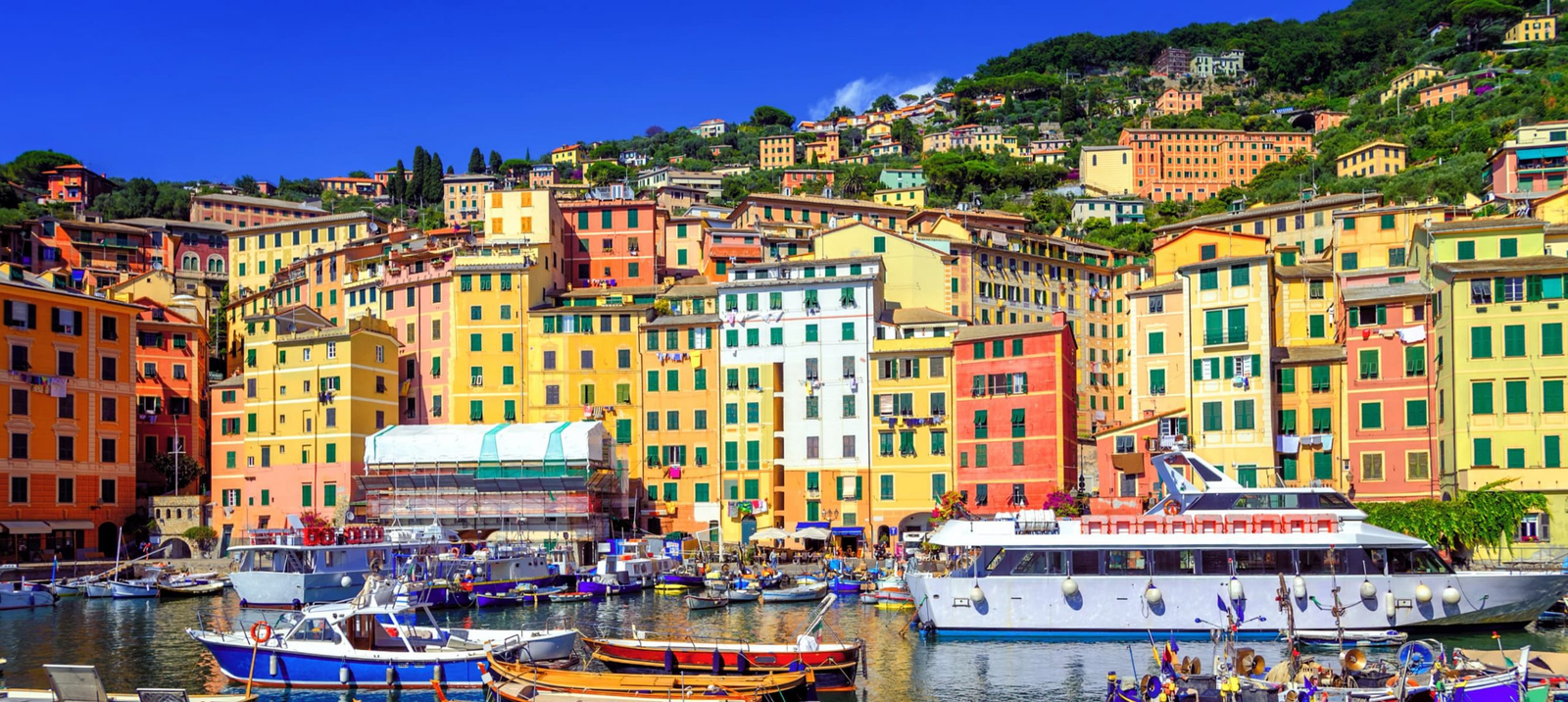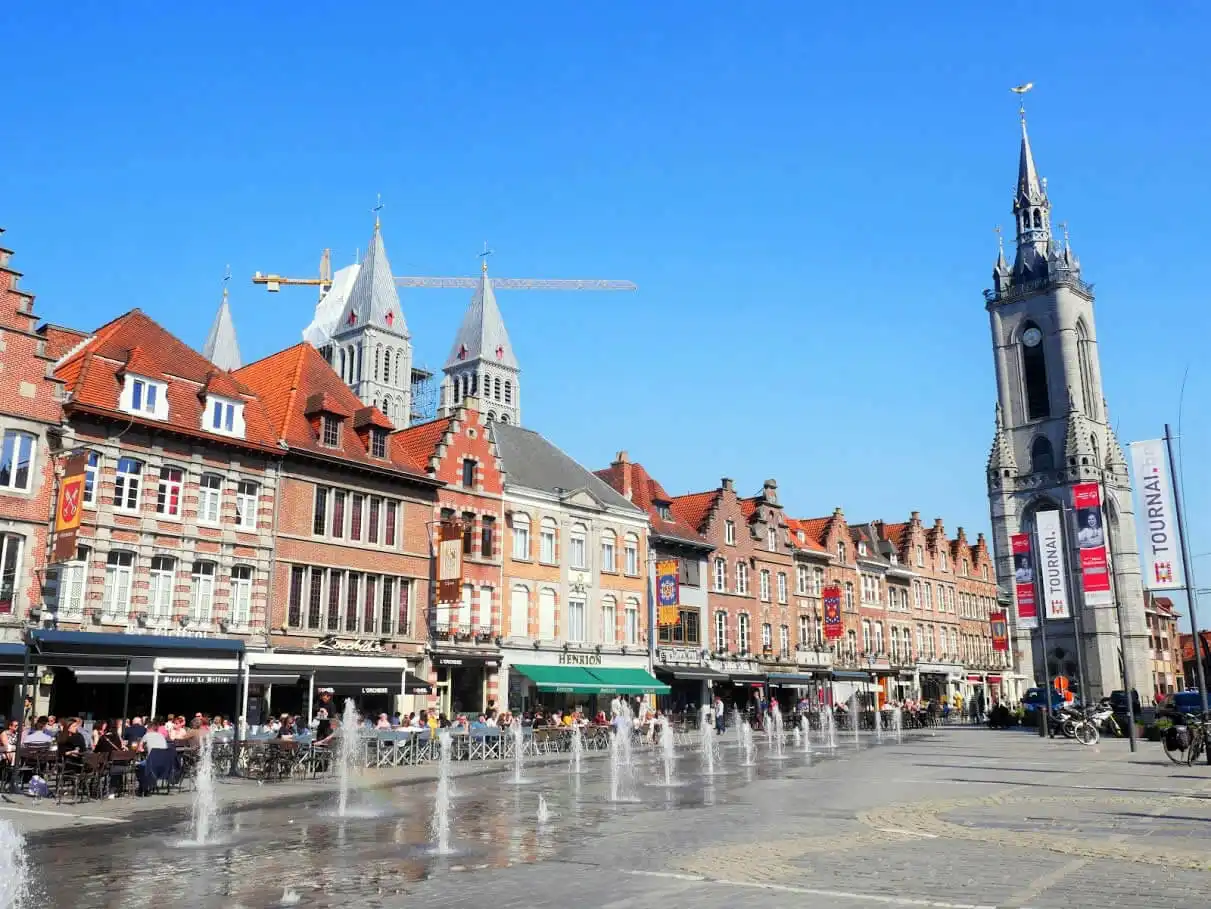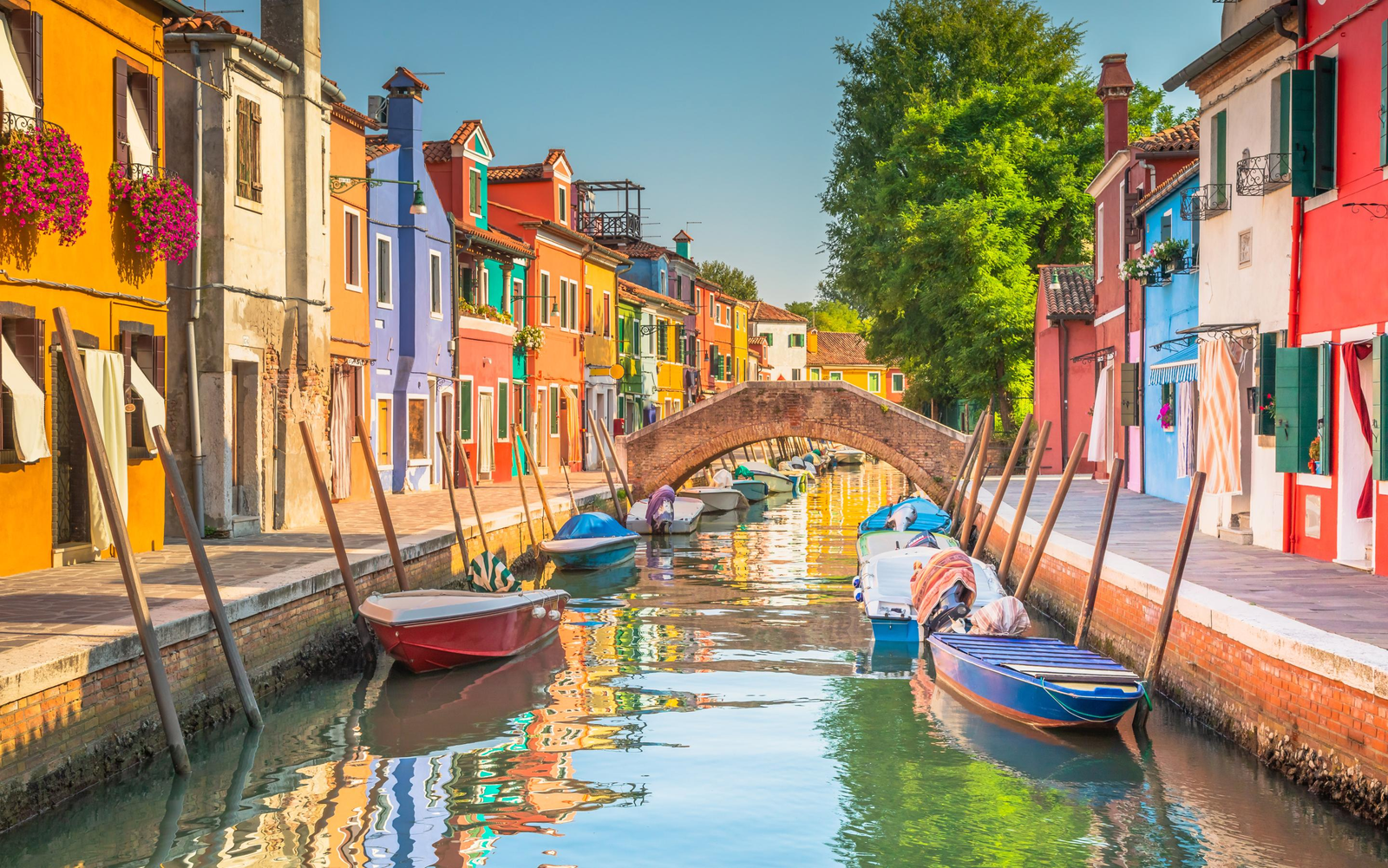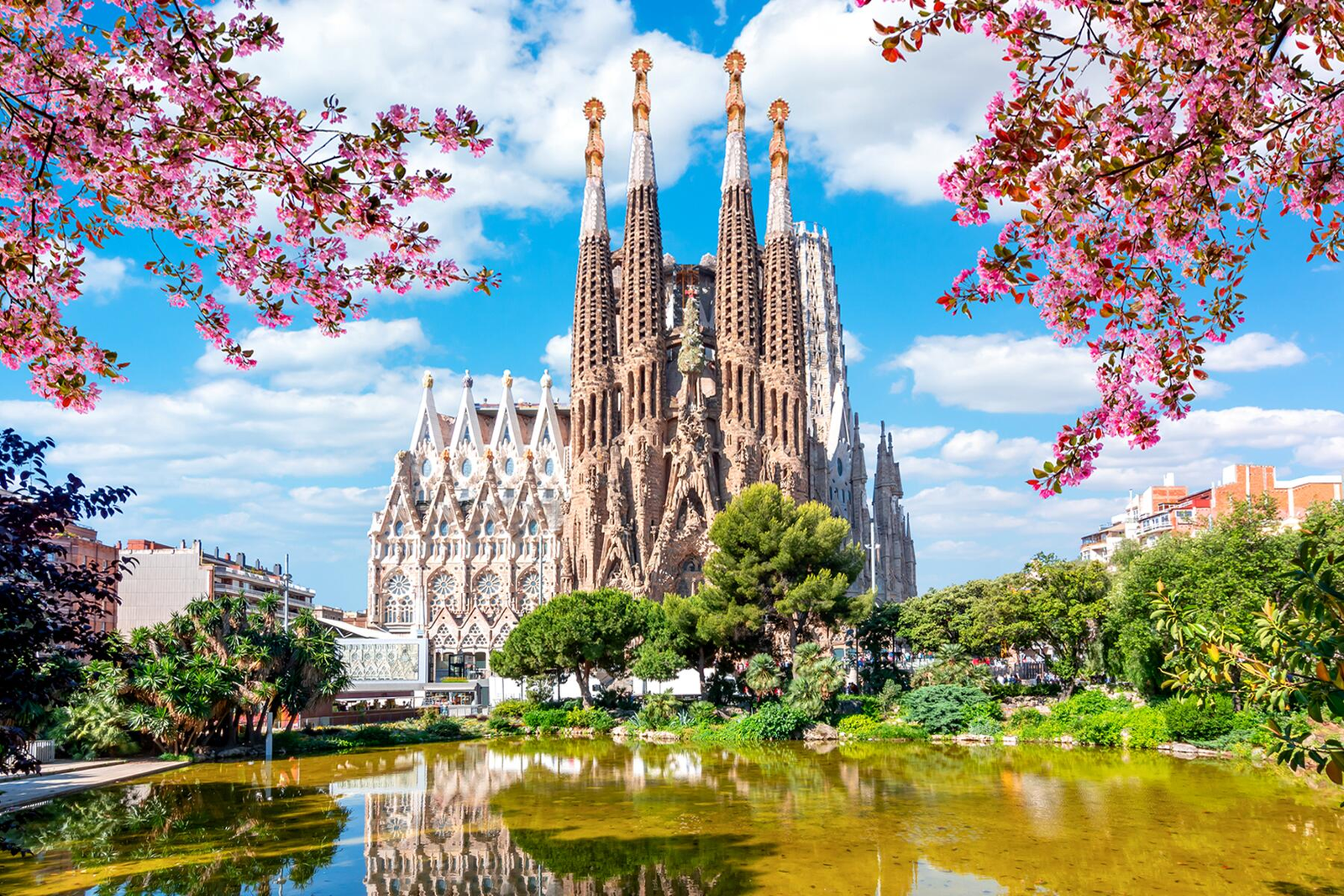With its spectacular seaside setting, maze of medieval streets, and monumental palaces, Genoa stands out as one of Italy’s most captivating port cities. Located in the Liguria region, Genoa served as an influential maritime power during the Middle Ages and boasts architectural treasures spanning centuries.
| # | Activity | Description |
|---|---|---|
| 1 | Explore the UNESCO-Listed Historic Center | Visit medieval and Renaissance sites like San Lorenzo Cathedral and Palazzo Ducale. |
| 2 | Learn about Genoa’s Seafaring Past | Explore maritime history at the Galata Museo del Mare and the medieval port. |
| 3 | Sample Local Specialties at Mercato Orientale | Enjoy Ligurian cuisine in a historic market hall. |
| 4 | Explore the Via Garibaldi Palazzi | Walk along a street lined with 16th-century noble palaces. |
| 5 | Ride the Funiculars for City Views | Use funicular railways for unique views of the city. |
| 6 | See Da Vinci’s St. John the Baptist | View a Leonardo da Vinci painting at the Accademia Ligustica. |
| 7 | Sample Pesto with Fresh Basil and Pine Nuts | Try the local pesto alla genovese in authentic eateries. |
| 8 | Walk Along the Ancient City Walls | Explore remnants of Genoa’s 12th-century walls. |
| 9 | Visit the Seafood Restaurants at Porto Antico | Dine on fresh seafood at the renovated harbor area. |
| 10 | Admire Baroque Genoa | See 17th-century Baroque architecture in the Via Balbi area. |
| 11 | Take a Day Trip along the Cinque Terre | Visit picturesque cliffside villages near Genoa. |
| 12 | Wander Through Strada Nuova’s Palaces | Explore historic palaces now serving as art museums. |
| 13 | Browse the Shops Along Via XX Settembre | Enjoy shopping on a bustling boulevard. |
| 14 | Visit the Tropical Glass Domes of the Hanbury Gardens | Experience exotic plants in a 19th-century British merchant’s garden. |
| 15 | Try Traditional Focaccia at Local Bakeries | Sample Genoa’s famous flatbread in various flavors. |
Beyond the historic attractions, the city also offers great shopping, vibrant neighborhoods, and delicious local cuisine. If you’re planning a trip to Genoa in 2024, here are 15 of the top things to see and do in this underrated Italian gem.
Explore the UNESCO-Listed Historic Center

Name and Location: Historic Center of Genoa, Italy
History and Significance: Genoa’s historic center dates back to the Middle Ages and features a labyrinth of narrow alleyways, grand palaces, and medieval architecture. It was inscribed on UNESCO’s World Heritage List in 2006 for its unique blend of art and history. The core of the old town lies within the 12th century city walls.
What to Expect: Visitors can explore centuries-old churches, opulent palaces, bustling markets, and fine examples of Renaissance and Baroque architecture. Key sights include the 12th century San Lorenzo Cathedral, 16th century Royal Palace, and the grand Via Garibaldi lined with palaces. There are also many small piazzas, cafes, shops, and local life to take in.
Visitor Information: The historic center is compact and walkable. Excellent bus, train, and metro connections allow easy access. Guided walking tours are available to learn more about the history and culture. Visiting during slower hours and avoiding summer crowds provides a better experience.
Genoa’s historic center earned UNESCO World Heritage status for its incredible concentration of medieval and Renaissance architectural marvels. The web of narrow lanes hums with culture and life as you walk past12th-century Romanesque churches, elegant palazzos, imposing fortresses, and grand piazzas.
Top attractions include the 12th century San Lorenzo Cathedral with black and white striped exterior, the princely Palazzo Ducale, and the Palazzo Reale palace. Wandering the atmospheric caruggi alleys transports you back centuries through time.
Learn about Genoa’s Seafaring Past

Name and Location: Genoa’s Seafaring Past
History and Significance: Genoa has a rich maritime history dating back centuries. A powerful seafaring republic in the Middle Ages, it established trading posts and colonies around the Mediterranean. The city was a hub of commerce and finance, controlling the Western Mediterranean. Genoa also produced explorers like Christopher Columbus.
What to Expect: Visitors can explore Genoa’s historic port area and visit museums to learn about its naval history. Key sights include Galata Museo del Mare, the largest maritime museum in the Mediterranean, and the house where Christopher Columbus grew up. The Old Port, lighthouse, and ancient city walls also provide insight into Genoa’s seafaring past.
Visitor Information: The main maritime sights are located in the old harbor area within walking distance. Audio guides and exhibits provide an in-depth experience. Visiting the Columbus House requires advanced reservations.
As an important maritime republic in the Middle Ages, Genoa built impressive fortunes from shipping and finance. The city’s seafaring heritage is honored at attractions like the Galata Museo del Mare museum housed in a former warehouse.
This immersive museum contains artifacts, model ships, paintings, multimedia exhibits on naval history and exploration. Climbing the lighthouse on the roof provides sweeping harbor views. The preserved sections of Genoa’s medieval port facilities and defense walls also tell the story of its trading dominance and battles with rivals like Pisa and Venice.
Sample Local Specialties at Mercato Orientale

Name and Location: Mercato Orientale
History and Significance: Mercato Orientale is a historic market hall located in Genoa’s old port area. First opened in 1899, it was renovated and reopened in 2018 as a modern food market with stalls, shops, and restaurants. It’s an excellent place to try some of Genoa’s traditional cuisine.
What to Expect: Inside Mercato Orientale visitors will find stalls and eateries offering local specialties like focaccia, pesto, seafood, street food, cheese, charcuterie, wine and more. There’s indoor and outdoor seating. The atmosphere is lively with cooking shows and music events. You can easily sample a variety of excellent local flavors.
Visitor Information: Mercato Orientale is open daily and located right near the Aquarium of Genoa. September to June it’s open 9am-8pm, and in July/August hours extend until 10pm. No reservations are needed.
For a tasty introduction to Ligurian cuisine, head to the Mercato Orientale in Genoa’s historic center. This covered market hall contains excellent food stalls and eateries hand-picking the city’s best breads, cheeses, produce, charcuterie, coffee, beers and more.
Grab an oven-fresh focaccia dripping with olive oil or pick up ingredients for a beach picnic. You can also sit down for pasta, seafood, or classic Genoese meat dishes like cappon magro at the market’s casual restaurants. Browsing and sampling at the Mercato Orientale provides flavors of an authentic Genoa experience.
Explore the Via Garibaldi Palazzi

Name and Location: Garibaldi Palazzi in Genoa
History and Significance: Via Garibaldi is a grand Renaissance street lined with palatial residences built in the 16th century by Genoa’s wealthy merchant families. The palazzi showcase Renaissance and Mannerist architectural styles with elaborate façades and opulent interiors.
What to Expect: A stroll down Via Garibaldi allows visitors to admire the magnificent palazzi and get a glimpse into patrician life during Genoa’s heyday. Many palaces are open as museums, with original furnishings, frescoes, and artwork on display. Key palazzi include Palazzo Rosso, Palazzo Bianco, and Palazzo Tursi.
Visitor Information: Via Garibaldi is located in the historic center near the old port. Palazzi can be visited individually or a combination ticket allows entry to multiple palaces. Open hours are generally 9am-7pm but can vary by season. Guided tours are also available with advance booking.
The most impressive display of 16th century palatial architecture lines both sides of Via Garibaldi in central Genoa. This pedestrianized street earned UNESCO World Heritage status thanks to its concentration of over a dozen noble palazzi built when Genoa was at its wealthiest as a trading and banking hub.
You can admire the elaborately frescoed facades and grand entryways of Palazzo Rosso, Palazzo Bianco, Palazzo Spinola, and more as you walk this street of Genoese power and prestige. Some palaces now house art museums and cultural centers open to visitors.
Ride the Funiculars for City Views

Name and Location: City Views in Genoa
History and Significance: Genoa’s historic funicular railways provide transportation up and down the city’s steep terrain. Dating back to the late 1800s, they offer access to panoramic views from high points around the port and old town. Riding them is a classic Genoese experience.
What to Expect: The three main funiculars are Zecca-Righi, Sant’Anna, and Montegalletto. Each ascends to scenic vistas where you can admire Genoa’s skyline, old town, harbor, and surrounding hills. Zecca-Righi is the most popular route with expansive views. Funicular rides are short, scenic, and inexpensive.
Visitor Information: Funicular stations are located around the historic center and port areas. There are several ticket options. The GenoaPass includes unlimited funicular rides. For the best views, go early or late to avoid crowds. Riding both up and down offers different perspectives.
Genoa clings to a picturesque coastal hillside, which means funicular railways are often the best way to travel through its steep neighborhoods. Riding the funiculars provides fun city views as you ascend and descend vertiginous slopes.
The Zecca-Righi funicular whisks you from the harbor up to fortresses guarding the city. The Sant’Anna funicolar connects the city center to the hilltop Castel Sant’ Angelo. Genoa operates a dozen funicular lines to help you easily conquer its steep terrain.
See Da Vinci’s St. John the Baptist

Name and Location: Baptist Painting in Genoa, Italy
History and Significance: This rare painting by Leonardo da Vinci dates from around 1513-1516, towards the end of his career. It depicts St. John the Baptist in a graceful, enigmatic pose and is regarded as one of da Vinci’s final masterworks, exerting great influence on later artists.
What to Expect: The painting is displayed at the Civic Museum of Fine Arts in Genoa. Visitors can admire da Vinci’s sfumato technique, use of light and shadow, and the intriguing, almost elusive, expression of the saint. Seeing an original da Vinci work provides rare insight into the mind of this pioneering Renaissance genius.
Visitor Information: The Civic Museum is located in the historic center. Entrance tickets are around $10 USD. Open Tuesday-Friday 9am-7pm, weekends 10am-7pm. Closed Mondays. Arrive early as lines can form to view the da Vinci room. Guided museum tours are recommended.
Fans of Leonardo da Vinci should visit the Accademia Ligustica museum to view one of the master’s earliest known paintings. Located inside the Palazzo Rosso, this small but powerful work from 1470-1475 depicts St. John the Baptist.
Da Vinci’s subject displays an enigmatic gaze with a background dramatically rendered in dark rock and blue sky. Study how the young da Vinci conveyed mood through chiaroscuro light and shadow at this transitional moment before his mature style emerged.
Sample Pesto with Fresh Basil and Pine Nuts

Name and Location: Fresh Basil and Pine Nuts in Genoa
History and Significance: Genoa is considered the birthplace of basil pesto, the classic Ligurian sauce made from basil, pine nuts, garlic, olive oil, and cheese. The excellent climate, proximity to the sea, and local ingredients come together in this flavorful, famous specialty.
What to Expect: Visitors can try authentic pesto at restaurants around the city. Opt for trofie al pesto pasta or pesto-topped focaccia for the true experience. Key spots include tiny neighborhood trattorias, Mercato Orientale’s food stalls, and restaurants along the harbor. The fresh basil and pine nuts really make the flavors shine.
Visitor Information: Pesto is ubiquitous in Genoa, but restaurants in the historic center and port areas offer some of the most authentic options. Go at lunch or dinner when pesto is freshest. For a unique experience, take a pesto-making class offered by local culinary schools.
The Liguria region boasts some of Italy’s most mouthwatering cuisine using excellent local ingredients like basil, garlic, and olive oil. Genoa claims to be the birthplace of pesto sauce, which originated in the late 19th century.
For the best pesto alla genovese, head to hole-in-the-wall shops and bakeries away from touristy zones. The pounded basil and garlic sauce gets stirred into pans of trenette pasta for a quick, flavorful meal. Pair it with a chilled glass of local Pigato white wine.
Walk Along the Ancient City Walls

While only fragments remain today, Genoa was once surrounded by an imposing circuit of defensive walls dating back to the 12th century. Walking along sections like the Porta Soprana gateway and walls near the Porto Antico allows you to envision fortified medieval Genoa.
Some segments visible from adjacent streets feature clever architectural blends into more modern structures. Use the Porta Soprana as a time portal back to when warring Italian city-states battled for naval dominance and trade supremacy in the Mediterranean.
Visit the Seafood Restaurants at Porto Antico

Name and Location: Porto Antico in Genoa
History and Significance: Porto Antico is Genoa’s old port area located along the city’s historic waterfront. It is home to many excellent seafood restaurants that serve up fresh local catches like anchovies, sea bass, octopus, mussels, and more.
What to Expect: The restaurants at Porto Antico offer both simple, affordable seafood eateries and upscale dining with harbor views. Visitors can try traditional Ligurian seafood dishes or sample innovative creations. Key spots include La Barchina, L’Ostaia, and Il Marin. Watching the bustling port activity adds to the experience.
Visitor Information: Porto Antico is very walkable. Restaurants open for lunch and dinner daily. Making reservations is recommended, especially for waterfront tables. September-May is best for avoiding the summertime tourist crowds.
The Porto Antico (Old Port) represents Genoa’s redeveloped harbor area with museums, an aquarium, shops, and restaurants. Strolling the harborfront promenade shows off Genoa’s maritime ambiance, with yachts and ferries docked alongside ancient warehouses.
For the city’s freshest seafood, dine at one of the many excellent restaurants lining the wharves. Outdoor tables place you just steps from the boats unloading the daily catch. Be sure to try Liguria’s signature dish of focaccia di Recco, a stuffed flatbread delight.
Admire Baroque Genoa

Name and Location: Baroque Genoa
History and Significance: After being bombed in 1684, Genoa was extensively rebuilt in the ornate Baroque architectural style. Some of Italy’s most important Baroque buildings and monuments can be found throughout the city, making it a prime destination for admiring this decorative, dramatic aesthetic.
What to Expect: Visitors can take in the elaborate Baroque facades, sculptures, frescoes and gilded interiors at sites like the Cathedral of San Lorenzo, Palazzo Rosso, Church of Gesù, and more. The city’s layout itself follows Baroque urban planning ideals. Walking the historic center allows you to fully appreciate Genoa’s Baroque beauty.
Visitor Information: Genoa’s UNESCO-listed historic district is compact and walkable. Guided tours and museum passes allow easy access to key Baroque landmarks. Avoid summer heat and crowds. Spring or fall offer ideal weather for walking between sites.
Although Genoa reached its zenith during the Renaissance, the 17th century saw affluent families continue embellishing the city with grand Baroque architecture. The Via Balbi area contains two of the most opulent palazzi: Palazzo Reale and Palazzo Balbi. Their façades and interiors overflow with ornamental details like frescoes, gilded mirrors, and chandeliers.
The elaborately decorated San Siro, Gesu, and Santissima Annunziata churches are other fine examples of Genoese Baroque done right.
Take a Day Trip along the Cinque Terre

Name and Location: Cinque Terre from Genoa
History and Significance: The Cinque Terre refers to five cliffside villages south of Genoa renowned for their picturesque beauty, hiking trails, and swimming holes. A day trip here from Genoa makes for an easy escape to extraordinary seaside scenery and charm.
What to Expect: Visitors can take trains, boats, or guided tours to reach the Cinque Terre from Genoa in under 2 hours. Strolling through the colorful villages, hiking between them, sampling local seafood, and swimming in the turquoise waters offer the perfect Italian coastal experience. Don’t miss the views!
Visitor Information: Trains to Cinque Terre run hourly from Genoa’s Piazza Principe and Genova Brignole stations. Purchase tickets in advance online to avoid lines. Wear shoes suitable for hiking the trails between villages. Avoid weekends and peak summer months if possible.
The colorful cliffside villages of the Cinque Terre make for a perfect day trip about 90 minutes south of Genoa. Explore car-free Vernazza, Corniglia, and Manarola, linked by hiking trails with sublime sea views.
Boats also connect the villages if you don’t feel like walking. Soak up the picturesque scenery, sample seafood, and stroll the steep lanes of these quintessential Italian rivieras. The Cinque Terre offers a nice change of pace from the bustle of Genoa.
Wander Through Strada Nuova’s Palaces

Name and Location: Strada Nuova’s Palaces in Genoa
History and Significance: Strada Nuova (now Via Garibaldi) was built in the mid 1500s as a grand thoroughfare for the palaces of Genoa’s wealthy families. Unifying Renaissance architecture with a planned layout, it reflects the city’s economic prowess at its peak. The palaces represent artistic and cultural heights.
What to Expect: Walking the length of Strada Nuova allows you to take in the prestigious palaces and imagine 16th century life. Many palaces are now museums displaying frescoes, artwork, and furnishings from the Renaissance period. It offers a look into the world of old nobility and merchant class.
Visitor Information: Located in the historic center, Strada Nuova is very walkable. Palazzi museums are open 9am-7pm most of the year. Tickets allow access to multiple sites. Early morning and late afternoon provide fewer crowds and better light for photographs.
For a quieter look at the opulent palaces built by Genoa’s wealthy families during its 16th and 17th century zenith, walk down Strada Nuova (now Via Garibaldi). This harmonious street contains Palazzo Rosso and Palazzo Bianco, which are now art museums containing works by Rubens, Van Dyck, and other European masters.
Other palaces here are still private residences but you can glimpse inside their courtyards and appreciate the artistic facade details. Soak up the power and prestige still evident along this historic “new road.”
Browse the Shops Along Via XX Settembre

Name and Location: XX Settembre in Genoa, Italy
History and Significance: Constructed in the late 19th century, Via XX Settembre is Genoa’s grand boulevard lined with stately buildings and high-end shops. Connecting major city landmarks, it became the city’s most fashionable street during its economic revival after unification.
What to Expect: A stroll down Via XX Settembre allows visitors to window shop, people watch, and admire the architecture. Designer boutiques, jewelry stores, street cafes, and grand hotels make for an elegant urban backdrop. Key landmarks include Teatro Carlo Felice and Piazza de Ferrari.
Visitor Information: Via XX Settembre is very walkable and centrally located near metro stops and the train station. Mornings and evenings are best for avoiding crowds. Stop at a cafe on Piazza de Ferrari or visit Galleria Mazzini for more shopping and people watching.
Genoa offers great shopping opportunities, especially along the grand boulevard of Via XX Settembre. This busy street is lined with temptations like designer clothing boutiques, jewelry stores, bookshops, homegoods emporiums, and foodie treats.
Popular chains mingle with chic local shops as you browse Italian fashions, leather goods, and gourmet products. Don’t miss the Culinary Shop deli for Ligurian wines, olive oils, and specialties. Dinnerware, ceramics, and kitchen tools also make great souvenirs of the Genoese lifestyle.
Visit the Tropical Glass Domes of the Hanbury Gardens

Name and Location: Tropical Glass Domes of the Hanbury Gardens in Genoa
History and Significance: The Hanbury Botanical Gardens feature splendid tropical and subtropical plants growing beneath soaring glass domes and pyramids dating back to the 19th century. Created by a wealthy English merchant, it is an oasis of rare botanicals in the city.
What to Expect: Visitors can walk among palms, orchids, citrus trees, and more within the historic glasshouses. Guided tours provide insight into the history and unique architecture. The gardens provide a tranquil escape from the bustling city with amazing plant diversity.
Visitor Information: The Hanbury Gardens are located on Corso Firenze just outside the historic center. Open Tuesday-Sunday, April-September 9am-7pm, October-March 9am-5pm. Admission around $10. Metro and bus connections are very convenient.
About 35 miles southwest of the city center, Villa Hanbury provides a welcome green escape with sprawling gardens showing off exotic palms and plants. The estate was created by a 19th century British merchant who imported specimens from around the world.
The property contains glasshouses, terraces, footpaths through blooming flora, and views of the Mediterranean Sea. It’s a peaceful spot to commune with nature after exploring the bustling streets of Genoa.
Try Traditional Focaccia at Local Bakeries

Name and Location: Local Bakeries in Genoa
History and Significance: Genoa has staked its claim as the birthplace of focaccia, the classic flatbread made with olive oil that makes an ideal quick snack. Local bakeries take pride in their focaccia recipes using flavorful Ligurian olive oil.
What to Expect: Look for hole-in-the-wall bakeries making focaccia on-site throughout the city center and old town. Top variations include olive oil and sea salt, rosemary and olives, onion, or cheese. It’s perfect for walking between sights. Don’t leave without trying this classic Genoese specialty!
Visitor Information: Focaccia is popular at all times of day so just stop whenever you need a break for coffee or a snack. Prices are very affordable. Keep an eye out for neighborhood bakeries away from the most touristy areas for the best quality.
You can’t leave Genoa without sampling its famous flatbread. Focaccia comes topped with olive oil, sea salt, rosemary, onion, olives, and other Mediterranean flavors. Every neighborhood bakery has its own version, so taste test a few to find your favorite.
Look for bakeries with lines out the door to join locals buying warm focaccia by the hunk for a quick meal or snack. For an indulgent treat, try focaccia stuffed with cheese or meat. The basics of flour, yeast, water, and olive oil create Genoese magic.
Conclusion
With its rich maritime history, spectacular harbor setting, monumental architecture, and scrumptious cuisine, Genoa deserves more time on every Italy travel itinerary. Going beyond the obvious historic sites reveals modern neighborhoods teeming with life, fashionable cafés and boutiques, and authentic local restaurants.
Genoa continuously evokes its influential past while embracing the future. The pleasures of Italian seaside culture come together in perfect harmony here. Follow this list of top things to do to fully experience Genoa’s magic in 2024 and create your own unforgettable maritime memories.





Join the Conversation